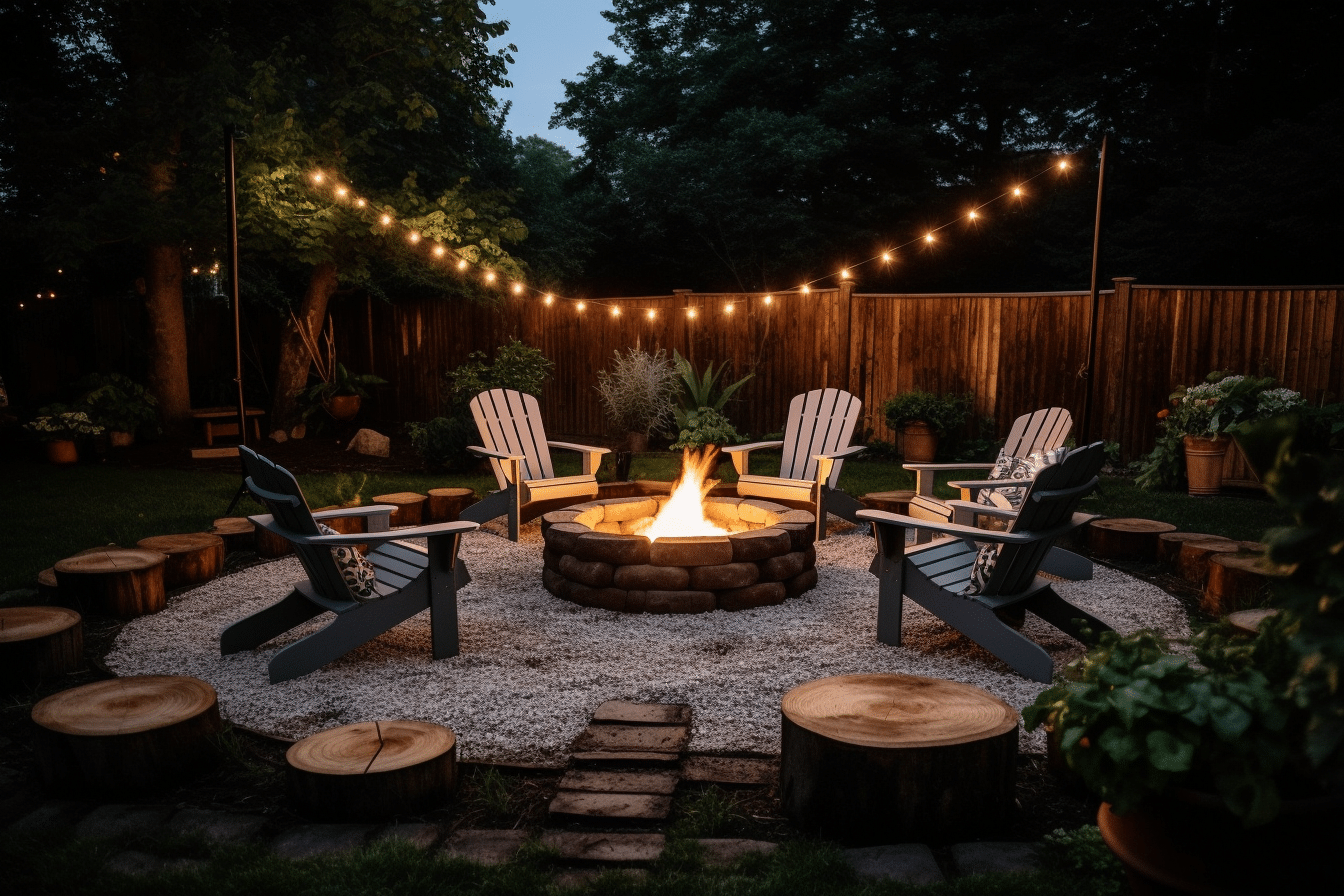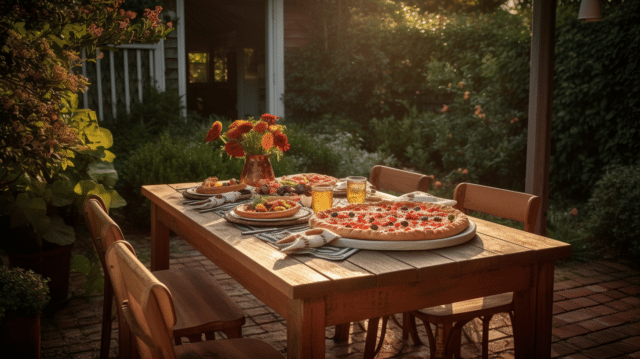
DIY Outdoor Staging Ideas
Outdoor staging, the art of preparing your outdoor spaces to enhance their appeal and functionality, is an often overlooked aspect of home design. Yet, it holds immense potential in transforming the way you experience your home. It’s not just about making your outdoor space look visually appealing; it’s about creating a functional, comfortable, and inviting area that extends the living space of your home, blurring the lines between the indoors and outdoors.
In this context, the beauty of DIY, or Do-It-Yourself, is that it allows you to personalize your space, infusing it with your unique style and taste. It’s about taking control of your environment and molding it to reflect your preferences and lifestyle. DIY projects provide an opportunity for creative expression and offer the satisfaction of creating something with your own hands.
In this article, we will explore various DIY outdoor staging ideas that you can implement to enhance your outdoor space. Whether you have a sprawling lawn or a compact balcony, these ideas will inspire you to roll up your sleeves and start transforming your outdoor area into your personal oasis. From understanding your outdoor space to maintaining it, we will guide you through each step of the process, ensuring you have all the knowledge you need to embark on this exciting journey. So, let’s get started!
Understanding Your Outdoor Space
Before you can transform your outdoor area into a stunning, functional space, you need to understand its current state and potential. This involves assessing the physical aspects of the space, identifying its key features, and understanding how it can best be used. Here’s a deeper dive into these steps:
Assessing Your Space
Start by taking a good look at your outdoor space. Walk around it, take measurements, and note down the following:
- Size: How large is your outdoor space? The size will determine what kind of projects you can undertake and how many different areas you can create.
- Shape: Is your space rectangular, square, or an irregular shape? The shape can influence the layout of your staging.
- Sunlight: Which areas get the most sunlight, and at what times of the day? This is important for positioning seating areas, dining spaces, and plants.
- Privacy: Are there areas that are more private than others? You might want to place seating or dining areas in these spots.
- Existing Structures: Are there any existing structures, like a patio, pergola, or shed? These can be incorporated into your staging.
Identifying Key Features
Next, identify the key features of your outdoor space. These are elements that are either already attractive or have the potential to become focal points. They could include:
- Views: If you have a beautiful view, consider how you can stage your space to make the most of it.
- Mature Trees: Large trees can provide shade and create a sense of enclosure. They can also serve as anchors for swings or hammocks.
- Water Features: If you have a pond, a stream, or a pool, think about how you can incorporate it into your staging.
- Architectural Details: Does your home have interesting architectural details that can be seen from the outdoor space? If so, consider how you can complement them with your staging.
Understanding your outdoor space is the first step towards successful DIY outdoor staging. By assessing your space and identifying its key features, you can create a plan that makes the most of what you have, resulting in a beautiful, functional outdoor area that truly enhances your home.
DIY Outdoor Staging: The Basics
Embarking on a DIY outdoor staging project can be an exciting endeavor. It’s a chance to inject your personality into your outdoor space and make it truly your own. But before you dive in, it’s essential to understand the basics. Here’s a more detailed look at the foundational elements of DIY outdoor staging:
Choosing a Theme
The first step in your DIY outdoor staging project is to choose a theme. This will guide your decisions and help create a cohesive look and feel in your space. The theme you choose should reflect your personal style and the overall aesthetic of your home. Here are a few theme ideas:
- Rustic: This theme is characterized by rugged natural beauty. It includes elements like reclaimed wood furniture, vintage items, and earthy colors.
- Modern: A modern outdoor space is all about clean lines, minimalism, and neutral colors. It often includes sleek furniture and contemporary decor.
- Beachy: If you love the sea, a beachy theme could be perfect. Think light colors, wicker or rattan furniture, and nautical accents.
- Bohemian: A bohemian outdoor space is eclectic and colorful, with a mix of patterns, textures, and vibrant colors.
Selecting a Color Palette
Once you’ve chosen a theme, it’s time to select a color palette. The colors you choose should complement your theme and blend well with the natural surroundings. Here are a few tips for selecting a color palette:
- Consider the Colors of Your Home: Your outdoor space should be an extension of your home, so consider the colors of your home’s exterior and interior in your palette.
- Think About the Natural Landscape: Consider the colors present in your garden or the surrounding landscape. For example, earth tones or vibrant floral colors might work well if you have a lot of greenery.
- Don’t Be Afraid to Use Color: While neutral colors can create a calm and sophisticated space, don’t be afraid to use color in your outdoor space. Bright colors can add personality and make your space more inviting.
Remember, DIY outdoor staging aims to create a space that feels inviting and comfortable while also being stylish and reflective of your personal taste. By choosing a theme and color palette that resonates with you, you’ll be well on your way to creating an outdoor space you love.
DIY Outdoor Staging Ideas

There are countless ways to stage your outdoor space; the best part is you can do it yourself! Here are some ideas:
Creating a Cozy Seating Area: Use comfortable outdoor furniture to create a cozy seating area. Add a coffee table for functionality and an outdoor rug to define the space.
Setting Up an Outdoor Dining Space: An outdoor dining area is perfect for family meals or entertaining guests. Choose a sturdy table and comfortable chairs. Add a patio umbrella for shade.
Building a DIY Fire Pit: A fire pit can be a fantastic focal point and a cozy gathering spot. You can build one using bricks or stones.
Installing a Hammock or Swing: A hammock or swing can add a fun and relaxing element to your outdoor space.
Adding a Water Feature: A DIY water feature, such as a fountain or a pond, can add tranquility and beauty to your yard.
Creating a Garden Path: A garden path can guide visitors through your outdoor space. Use stepping stones, gravel, or wood chips.
Setting Up a Mini Outdoor Library: A weatherproof bookcase filled with books can create a
unique and charming corner in your garden.
Installing DIY Lighting: Outdoor lighting can enhance the ambiance of your space. Consider solar lights, string lights, or lanterns.
Creating a DIY Outdoor Bar: An outdoor bar can be a hit at parties. You can build one using reclaimed wood or even a repurposed garden table.
Setting Up a Children’s Play Area: If you have kids, consider setting up a play area with a sandbox, a swing set, or a DIY climbing wall.
Enhancing Your Outdoor Staging
Once you’ve set up your main features, it’s time to enhance your space:
Using Plants and Flowers: Plants and flowers can add life and color to your outdoor space. Choose a variety of plants that thrive in your local climate.
Adding Outdoor Art: Outdoor art, such as sculptures, wind chimes, or a mural, can add personality and interest to your yard.
Utilizing Outdoor Rugs: Outdoor rugs can add comfort underfoot and help define different areas in your outdoor space.
Incorporating Throw Pillows and Blankets: Throw pillows and blankets can add color and comfort to your outdoor seating areas.
Maintaining Your Outdoor Space
Maintaining your outdoor space is just as important as setting it up. Regular cleaning and maintenance will keep your space looking its best. Consider the changing seasons and how they might affect your outdoor staging. For example, you might need to store cushions and rugs indoors during the rainy season.
The Bottom Line
DIY outdoor staging is more than just a home improvement project; it’s a creative journey that allows you to transform your outdoor space into a personalized sanctuary. The impact of such a transformation extends beyond aesthetics. It creates an inviting outdoor living area where you can relax, entertain, and enjoy the beauty of nature right in your backyard.
The process of DIY outdoor staging, from conceptualizing the design to physically creating the space, can be incredibly rewarding. It’s an opportunity to engage with your environment in a hands-on way, and the result is a space that truly reflects your personal style and meets your needs.
But remember, the journey doesn’t end once the last piece of furniture is in place or the final plant is potted. Maintaining your outdoor space, keeping it clean and fresh, is just as important as setting it up. Regular maintenance ensures that your space continues to be a source of joy and relaxation for years to come.
As we conclude this guide, we hope that you feel inspired and equipped to start your DIY outdoor staging project. Remember, there’s no right or wrong way to design your outdoor space. It’s all about creating an environment you love that works for your lifestyle.
And remember, if you ever need assistance or advice on home staging, OKCHomeSellers is always happy to help. We’re committed to helping you create the perfect outdoor space that enhances your home’s appeal and brings you immense joy.
So roll up your sleeves, unleash your creativity, and start creating your dream outdoor space. Happy staging!
Luxury Specialist at McGraw Realtors
With a diverse background, including a career as an Air Force fighter pilot and entrepreneurship, Bill transitioned to real estate in 1995. Co-founding Paradigm Realty with his wife, Charlene, he quickly rose to prominence in Oklahoma City’s luxury real estate scene. Now, as one of the top agents with annual sales surpassing $20 million, Bill’s dedication to exceptional service remains unparalleled. With a legacy spanning over two decades in the industry, Bill’s expertise and commitment make him a trusted name in luxury real estate.